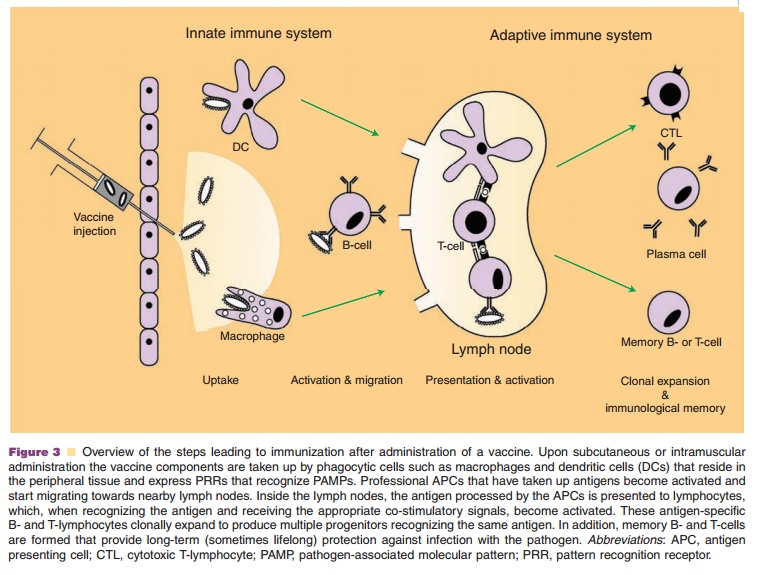Chapter: Pharmaceutical Biotechnology: Fundamentals and Applications : Vaccines
Active Immunization: Generation of an Immune Response
Active Immunization: Generation of an Immune Response
The generation of an immune reaction against a pathogen by vaccination
follows several distinct steps that should ultimately lead to long-lasting
protection against the pathogen through memory cells. These steps are uptake of
the vaccine (consisting of either the entire pathogen or antigenic components
thereof) by phagocytic cells, activation and migration of profes-sional
antigen-presenting cells (APCs) from infected tissue to peripheral lymphoid
organs, antigen pre-sentation to T-lymphocytes and finally activation (or
inhibition) of T- and B-lymphocytes. The entire process is illustrated in
Figure 3. Below we will describe the successive steps leading to an immune
response to a pathogen, which are important for the design and fate of vaccines
against the pathogen.

Related Topics